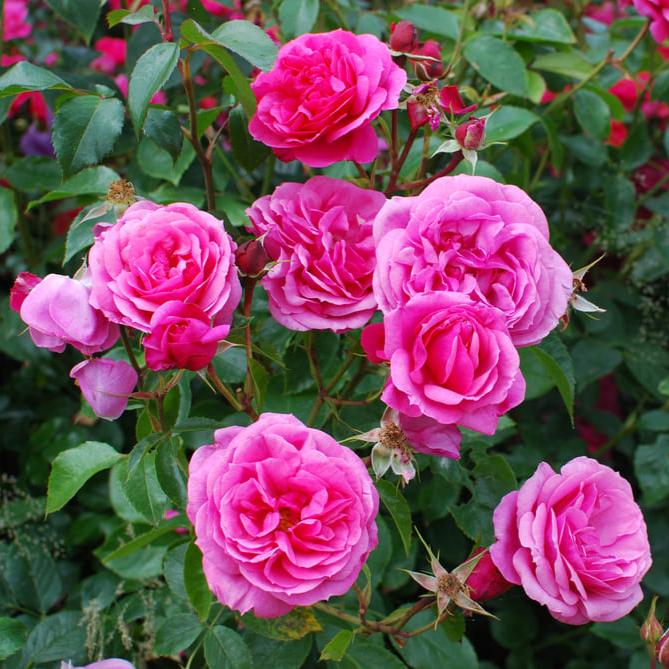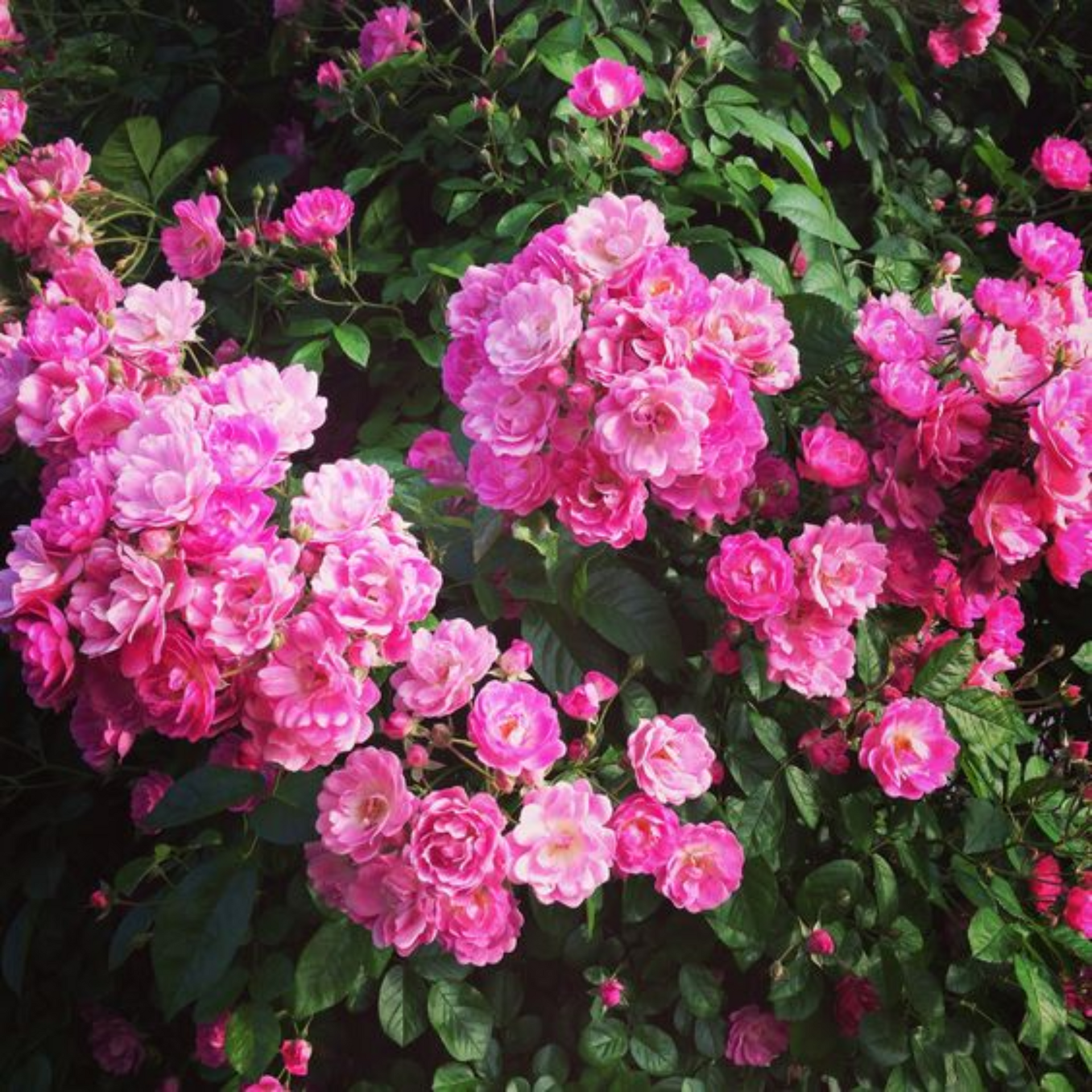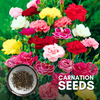


Green Paradise Offers Beautiful Mini
Pink Bunch Rose Plant
About Mini Pink Bunch Roses Plant
Miniature Mini Pink Bunch roses are charming and delicate plants that bring elegance and beauty to any garden or indoor setting.
Here's some information about mini Pink rose plants:
Miniature Mini Pink roses are a variety of rose bushes that produce small-sized flowers with pure white petals. They typically have multiple blooms per stem, creating a lovely cluster of delicate blossoms. The plants themselves are compact and bushy, reaching a height of around 6 to 18 inches (15 to 45 cm) and spreading up to 12 inches (30 cm) wide.
Flower Characteristics:
-
Mini Pink roses feature petite, fully double or semi-double blooms.
-
The petals are often smooth and exhibit a pristine white coloration.
-
Some varieties may have a subtle hint of cream or ivory.
-
The flowers usually have a light fragrance, though the intensity may vary depending on the specific cultivar.
Growing Conditions:
-
Miniature Pink roses thrive in well-drained soil with a slightly acidic to neutral pH level (around 6.0 to 7.0).
-
They prefer full sun exposure for at least six hours a day, but they can tolerate partial shade.
-
These plants are relatively hardy and can be grown both indoors and outdoors, depending on the climate.
Care and Maintenance:
-
To ensure healthy growth and abundant blooms,
here are some care tips for mini white roses:
Watering:
-
Keep the soil constantly wettish but not doused.
-
When the top inch of soil seems dry, water deeply.
Fertilizing:
-
Feed the plants with a balanced rose fertilizer during the growing season.
-
Follow the package instructions for proper operation.
Pruning:
-
Regular pruning helps maintain the shape and size of the factory.
-
Remove dead or damaged branches and trim back any overgrown or crossing stems.
-
Pruning should be done in the early spring before new growth begins.
Disease and Pest Control:
-
Monitor the plants for common rose pests such as aphids, spider mites, and black spot disease.
-
Treat any infestations instantly with applicable organic or chemical controls.
Companion Planting:
-
Miniature Pink roses work well as borders, edging plants, or container specimens.
-
They can be complemented with other low-growing flowers or combined with different colored roses to create stunning displays.
-
Consider planting them alongside lavender, dwarf conifers, or ornamental grasses to enhance their overall visual appeal.
Varieties:
-
There are several popular varieties of miniature Pink roses to choose from, including 'Baby Love,' 'Irish Hope,' 'Snow Bride,' and 'Snow Goose.'
-
Each variety may have slightly different growth habits and flower characteristics, so research specific cultivars to find the one that suits your preferences.
Miniature white roses offer a delicate and timeless beauty that adds a touch of elegance to any garden or floral arrangement. With proper care and attention, these petite plants can bring joy and serenity to your surroundings.
How To Grow Mini White Roses
Growing mini Pink rose plants can be a delightful and rewarding experience.
Here are some general guidelines to help you successfully grow mini Pink roses:
Choose the right variety:
-
Look for miniature rose varieties that produce white flowers.
-
Some popular mini-Pink roses include 'Cinderella,' 'Cutie Pie,' and 'Diamond Eyes.'
-
Purchase healthy plants from a reputable nursery or garden center.
Select a suitable location:
-
Miniature roses thrive in full sunlight, so choose a location that receives at least six hours of direct sunlight each day.
-
Insure the soil is well-drained and rich in organic matter.
Planting:
-
Dig a hole slightly larger than the root ball of the factory.
-
Place the rose factory in the hole, cub union (the blown region where the rose is grafted onto the rootstock) facing the dirt.
-
Fill the hole with dirt and indurate it carefully around the factory.
Watering:
-
Miniature roses require regular watering. Keep the soil moist but not saturated.
-
Water deeply at the base of the plant, avoiding wetting the foliage.
-
On average, water your mini Pink roses two to three times per week, adjusting the frequency depending on weather conditions.
Fertilizing:
-
Roses benefit from regular feeding.
-
Apply a balanced rose fertilizer according to the package instructions during the growing season.
-
Start fertilizing in spring when new growth appears and continue every four to six weeks until late summer.
-
Avoid fertilizing in late summer to prevent encouraging tender new growth that may be damaged by winter frost.
Pruning:
-
Prune mini Pink roses to maintain their compact shape and encourage new growth.
-
In late downtime or early spring, remove any dead or damaged wood.
-
Trim back any overgrown or crossing branches to maintain an open center.
-
Also, deadhead spent flowers throughout the growing season to promote continuous blooming.
Pest and disease control:
-
Monitor your mini Pink roses for common rose pests like aphids, spider mites, and black spot disease.
-
Treat infestations promptly with appropriate organic or chemical controls to prevent further damage.
-
Regularly inspect the leaves and stems for any signs of disease or pests.
Winter care:
-
In colder regions, protect your mini Pink roses during winter.
-
Apply a subcaste of mulch around the base of the factory to isolate the roots and cover them from indurating temperatures.
-
You can also consider covering the plants with burlap or a frost blanket during extreme cold snaps.
Regular care:
-
Keep an eye on your mini Pink roses throughout the year.
-
Check for signs of stress, watering needs, or pest issues.
-
Regular care and attention will help ensure healthy growth and abundant blooms.
Remember, growing roses requires patience and dedication. By providing them with the right care, your mini Pink rose plants can thrive and bring beauty to your garden or container displays.
How do you keep Mini Pink roses healthy?
To keep white roses healthy, there are several key factors you should consider.
Here are some tips:
Location and Sunlight:
-
Miniature roses thrive in bright sunlight, so place them in a location that receives at least six hours of direct sunlight per day.
-
Ensure they are not exposed to excessive heat or intense afternoon sun.
Soil and Drainage:
-
Use well-draining soil with a slightly acidic pH between 6.0 and 6.5.
-
Amend the soil with organic matter similar as compost to ameliorate its structure and drainage.
Watering:
-
Miniature roses need regular watering, especially during hot and dry periods.
-
Water deeply but avoid overwatering or leaving the soil waterlogged.
-
Allow the top inch of soil to dry out before soddening again.
Fertilization:
-
Feed your miniature roses with a balanced rose fertilizer during the growing season (spring to early fall).
-
Follow the package instructions for application rates.
-
Avoid over-fertilization, as it can lead to inordinate leafage growth at the expense of flowers
Pruning:
-
Prune miniature roses to maintain their compact shape and remove dead, damaged, or diseased wood.
-
Pruning also encourages new growth and enhances blooming.
-
Do a more substantial pruning in early spring before new growth emerges.
Pest and Disease Control:
-
Keep an eye out for common rose pests like aphids, spider mites, and black spot disease.
-
Regularly inspect the leaves and stems and take appropriate action if you notice any issues.
-
Use organic or chemical treatments as necessary, following the instructions handed in.
Winter Protection:
-
Most miniature roses are not as cold-hardy as larger rose varieties.
-
Provide winter protection by mulching around the base of the plants with straw or leaves to insulate the roots.
-
In colder regions, consider covering the plants with burlap or bringing them indoors to protect them from freezing temperatures.
Air Circulation:
-
Good air circulation helps prevent the development of fungal diseases.
-
Avoid crowding your miniature roses, and maintain adequate spacing between plants to allow air to flow freely.
By following these guidelines, you can help ensure the health and vitality of your miniature roses, leading to beautiful blooms and thriving plants.






